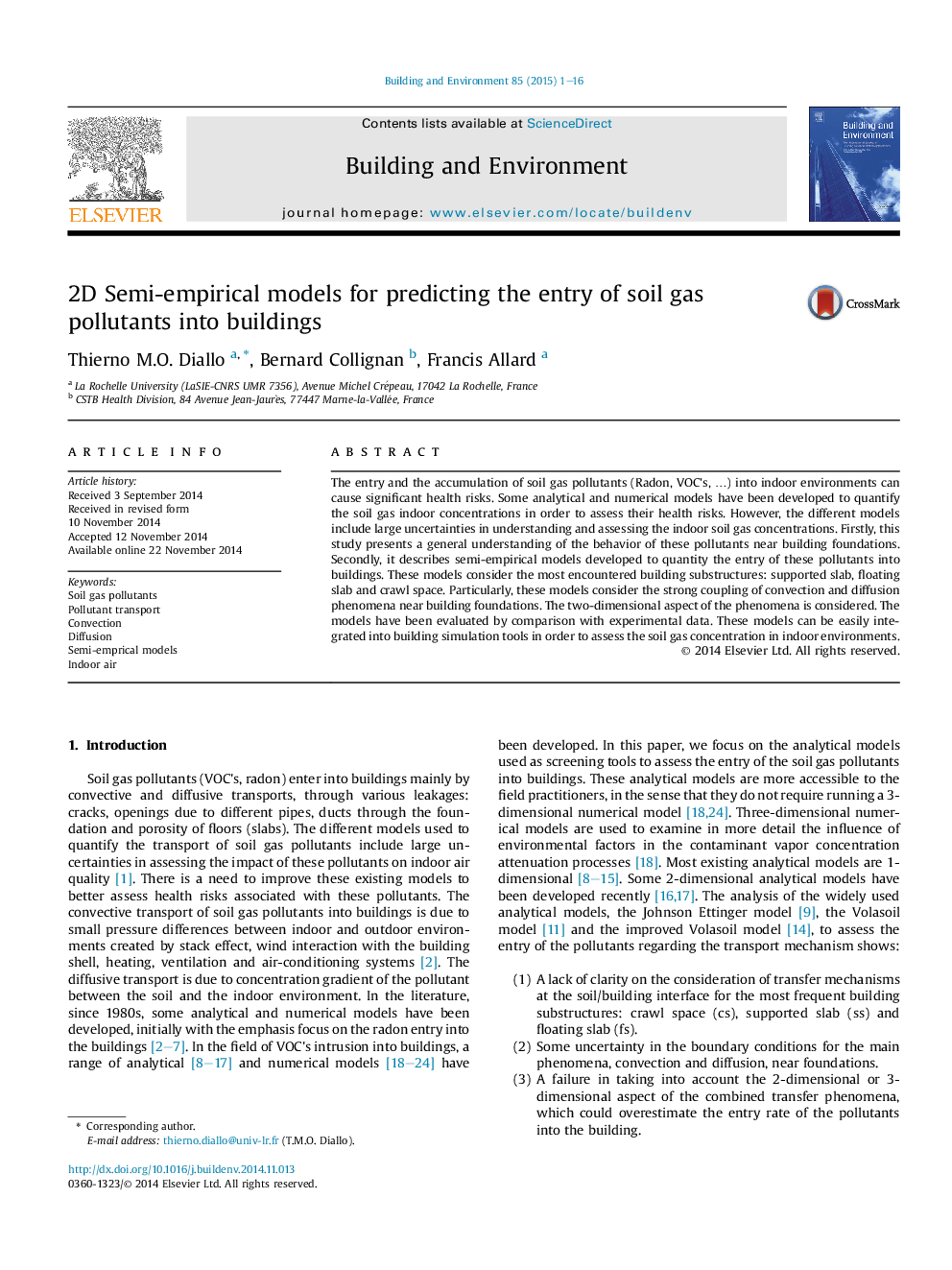| Article ID | Journal | Published Year | Pages | File Type |
|---|---|---|---|---|
| 247938 | Building and Environment | 2015 | 16 Pages |
•We performed numerical simulations to understand the behavior of soil gas pollutants near building foundations.•We developed 2D semi-empirical models to quantify the transfer of soil gas pollutants into buildings.•The models take into account the strong coupling of transport phenomena: convection and diffusion.•The models consider different building substructures: crawl space, supported slab and floating slab.•The developed models are compared with experimental data.
The entry and the accumulation of soil gas pollutants (Radon, VOC's, …) into indoor environments can cause significant health risks. Some analytical and numerical models have been developed to quantify the soil gas indoor concentrations in order to assess their health risks. However, the different models include large uncertainties in understanding and assessing the indoor soil gas concentrations. Firstly, this study presents a general understanding of the behavior of these pollutants near building foundations. Secondly, it describes semi-empirical models developed to quantity the entry of these pollutants into buildings. These models consider the most encountered building substructures: supported slab, floating slab and crawl space. Particularly, these models consider the strong coupling of convection and diffusion phenomena near building foundations. The two-dimensional aspect of the phenomena is considered. The models have been evaluated by comparison with experimental data. These models can be easily integrated into building simulation tools in order to assess the soil gas concentration in indoor environments.
